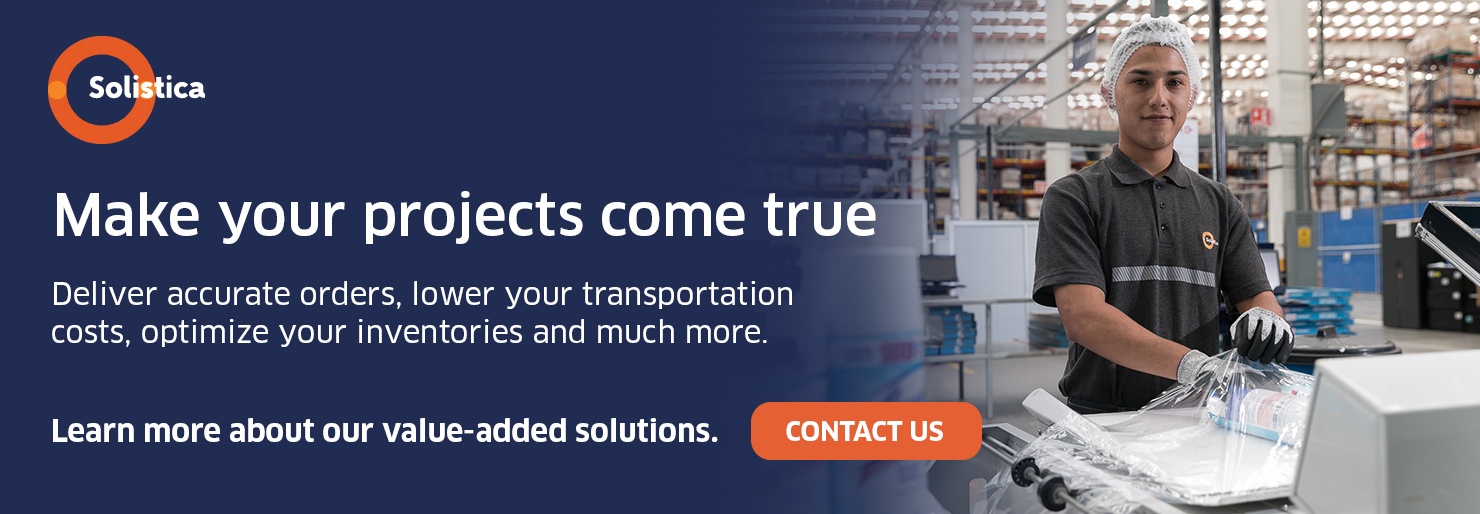Transporting and handling products that require controlled temperature and humidity levels in every link is a particular challenge in a supply chain.
This is what the cold chain is about, in other words, a set of successive stages (from manufacturing to marketing) in which specific temperature levels must be controlled to ensure the quality and preservation of these products, mostly foodstuffs, medicines or vaccines.
The logistics processes involved depend on key factors to overcome this challenge. These are the most important ones:
1. Measurement of key variables
Recording and controlling mainly the temperature and, when required, the humidity level, with the appropriate materials and tools, is the most important activity in these processes.
2. Warehousing conditions
Proper warehousing in this case requires: sanitation, the necessary refrigeration capacities, and efficient logistics for all related activities, from loading and unloading, product placement to picking or order preparation, all the way to packaging.
Today, in the best-refrigerated warehouses, it is no longer necessary to manually capture information from temperature gauges, as sensor-based monitoring technology provides this data for analysis.
It is also available a thermal imaging and fluid dynamics computational monitoring (CFD), which analyzes the air flow during the cooling process, and
allows the determination of the optimal ventilation for boxes, pallet distribution and other variable aspects within cold warehousing.
3. Transport and air conditioning
When transporting products that require cold chain, vehicles and their correct air conditioning are essential.
This type of transport requires a pre-cooling process, done at a lower temperature than that of the product to be transported, to eliminate residual heat. Proper technology and temperature control tools must be available, as well as backup systems to prevent the cold supply chain from breaking at any time.
4. Technological innovation and real-time information
To ensure the accuracy of all these processes, technology has evolved when it comes to ancillary devices for cooling and full traceability. Both reading instruments at destination (known as loggers) and real-time reading instruments (known as trackers or thermographers) are available.
These advances give maximum efficiency to the processes, both with control and monitoring systems and devices, as well as with a good software to control all logistic operations and tasks in the chain.
Currently, even refrigeration systems with natural refrigerants such as ammonia (NH3) or carbon dioxide (CO2) may be found, and they extract field heat to start the cold chain process. Real-time monitoring of loads also allows capturing data on location, temperature, humidity, and other variable aspects such as CO2 levels, or door opening, for a better control.
Increasing the capacity of monitoring and controlling the cold chain allows timely corrective actions to be taken when any critical variable exceeds the established ranges for quality control, thus offering the opportunity to avoid losses or reduce shrinkage, while the record itself, the conditions log throughout the chain, allows the parties involved to validate products were maintained in the required conditions.
5. The human factor
Although these new technologies offer great accuracy levels, issues on training the personnel involved, technical updates and training in general are essential to leverage the benefits of these technologies in cold chain management.
Finally, even beyond compliance with legal regulations and the requirements that must be observed by operators when dealing with such products such, it is important to remember that any failure in any part of the chain will damage and degrade products or, in the lesser case, reduce their quality, This often generates consequences for human health, such as the proliferation of dangerous microorganisms when it comes to foodstuffs, and the loss of effectiveness in case of drugs.
Thus, the investments and adjustments needed for a better cold chain management benefit all of us from an economic and social point of view.
